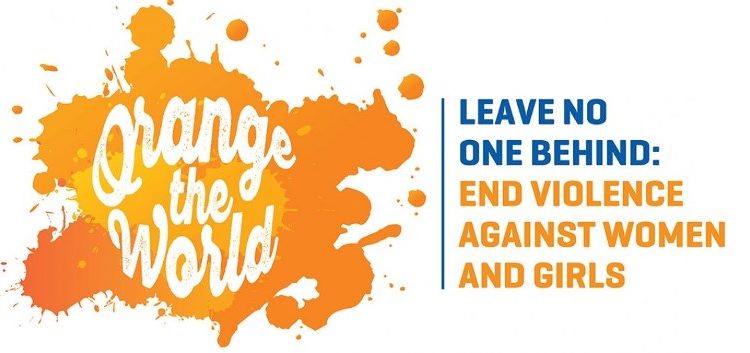Vermont / 29 de noviembre de 2017 / Por: EmmaJean Holley / Fuente: http://www.vnews.com/
Barbara Griffin is an elementary school reading teacher without an elementary school — or at least, not a regular one. Like many school staff in rural Vermont, Griffin splits her time between locations, in her case Westshire Elementary School, in West Fairlee, and Samuel Morey Elementary School, in Fairlee, both part of the Rivendell Interstate School District.
The two schools’ shared staff also includes art and music teachers, physical and occupational therapy providers, a librarian, a guidance counselor and a school nurse. Despite these shared resources, Westshire Elementary School was reported as having a student-to-staff ratio of 3.18-to-1, the lowest in the Vermont side of the Upper Valley, in a spreadsheet released by the Vermont Agency of Education last month.
“We’re already bare-bones,” said Griffin, who as a Title I reading teacher works with struggling, often low-income students. “It’s very frustrating, because I don’t think these ratios are an accurate reflection of what the situations in Vermont schools really look like. … The number doesn’t tell the whole story.”
Westshire isn’t the only school feeling the pinch. As enrollment in Vermont schools continues to shrink, school systems are facing pressure to adjust their staff numbers accordingly, lest per-pupil costs go through the roof.
But even in a state with the lowest student-to-teacher ratio in the nation, and almost one staff member for every four schoolchildren, some Upper Valley educators feel this task is easier said than done — and some, like Griffin, are questioning the validity of student-to-staff ratios as a measure of how well schools are managing their resources.
Because small schools can reduce staff by only so much, and can hang on to only so many students, raising ratios may require a hard look at some of the educational values that many Vermonters hold dear, but that may not be financially sustainable, Vermont Secretary of Education Rebecca Holcombe acknowledged in the Oct. 4 memo, which included the spreadsheet.
“In Vermont, we love small,” she wrote. But unless ratios improve at the statewide level, “we will be bearing very high education costs that are unlikely to contribute to better student outcomes.” She noted that the push to cut staff is especially strong right now, because the Legislature used a large amount of one-time money to reduce property taxes last year, contributing to a $50 million gap in next year’s budget that will likely result in a 7- to 9-cent increase in the statewide property tax rate, VtDigger reported last month.
Holcombe said in her memo that similarly small, rural states “spend less (on education) and see better results” than Vermont does. But Nelson Fogg, principal at Hartford High School, wondered whether “this ratio business” was more about the state’s financial concerns than about what’s best for students and schools.
“It feels to me like a bit of a math equation. They have to find the ($50 million), and so someone very smart figures out that increasing the number of students per teacher allows us to shave X millions of dollars,” Fogg said. “But this doesn’t necessarily take into account the reality of schools. It may be the reality of budgets, which is closely aligned, but that very smart person isn’t here for the day-to-day.”
Most Upper Valley schools have a student-to-staff ratio that’s higher than the statewide level of 4.25-to-1, according to the Agency of Education spreadsheet. The spreadsheet comprises K-12 enrollment and staffing data from the 2016 and 2017 fiscal years, and shows student-to-teacher and student-to-staff ratios for all Vermont public and publicly funded nonprofit independent schools.
Teacher ratio counts, like student enrollment counts, are K-12 only; staff ratios include both teaching and non-teaching school staff, but exclude pre-K teachers, maintenance and security, student transportation, food service, enterprise operations, community services operations and facilities acquisition and construction.
Randolph Elementary School was reported as having the highest student-to-staff ratio on the Vermont side of the Upper Valley, at 9.3 students for every one staff member at the school. This ratio is up slightly from 9.12-to-1 from the 2016 fiscal year — but Layne Millington, superintendent of Orange Southwest Supervisory Union, stressed that this isn’t because Randolph is necessarily doing anything special: Instead, he attributed its relatively high ratio to its relatively high enrollment.
“I think there’s a bit of an unfounded belief in Vermont that all schools have the ability to control these ratios, and that is simply not true,” he said in an email last week. “I believe that schools with larger enrollments have some control, but smaller ones do not.” Randolph Elementary School’s enrollment, reported at 284 in the 2017 fiscal year, dwarfs schools like the 80-student Westshire School in West Fairlee, and the 60-student Albert Bridge School in West Windsor, whose ratios are 3.18-to-1 and 4.92-to-1 respectively.
Schools with more students have an advantage when it comes to ratios, simply because “each staff member is physically able to serve more students,” Millington said in an email last week, adding that in some cases, cutting staff is next to impossible.
He described a hypothetical high school with 50 students, all of whom must fulfill certain requirements before graduating. Each of their required classes needs a teacher who’s been specially trained in that area: “If … we have to teach them math, English, social studies, health/wellness, science and foreign language, then we’ll need at least six teachers,” he said. This would bring the imaginary high school’s student-to-teacher ratio to 8.3-to-1.
But staffing doesn’t stop here. Schools’ “typical special education needs,” Millington said, call for at least two special educators, bringing the student-to-staff ratio down to 6.25-to-1. Add in a librarian, a guidance counselor, an administrative assistant and the principal, and this hypothetical high school’s ratio drops to just over four students per staff member — which also happens to be Vermont’s statewide level.
“You just can’t do it with fewer teachers,” said Jean Wheeler, principal of Oxbow High School in Bradford, Vt. “Right now, we couldn’t cut any more core subject staff.”
Though Oxbow’s student population was reported as 337 in the 2017 fiscal year, it’s also a seventh-through-12th grade facility, and requires more staff than a ninth-through-12th grade school to meet the needs of all ages served.
“There are challenges when it comes to making sure we are staffing both ends of the spectrum,” she said in a phone interview. Though Oxbow’s 4.1-to-1 student-to-staff ratio is on the lower end for the Upper Valley, and just under the statewide level, Wheeler said that in the case of schools like Oxbow, a diversified student body calls for a more diversified — and therefore larger — staff.
“On the positive side,” Millington said, should a small school’s enrollment grow, “we can absorb quite a few students before we’d have to hire more faculty.” But this scenario is unlikely for most schools, he said, given the past two decades of shrinking class sizes.
For this reason, he suspects that there may be “only one logical conclusion” when it comes to raising ratios on a large scale, and that’s to consolidate small schools into larger ones — an issue that comes with its own set of controversies in part because, as Holcombe pointed out, Vermont loves small.
Holcombe seems to have reached a similar conclusion as Millington, with her memo suggesting that schools look at merging as a way to boost their ratios and use educational funding more judiciously: “In some cases, the entire student body could fit in a neighboring school seven minutes away on a paved road, without incurring additional cost, and we could still maintain student-to-teacher ratios that are less than half the national average,” she said.
She also recommended that schools reevaluate the necessity of some of their support staff, and special education paraprofessionals in particular, whose numbers have been inching upward alongside special needs rates among students. Holcombe cited research that suggests students with disabilities do better when they learn directly from their teachers rather than from the paraprofessionals who work with students one-on-one, a practice that also brings up per-pupil spending significantly.
“A lot of the time, our support staff numbers are dictated by human need,” Wheeler said of Oxbow High School. “Some students still need that one-on-one.”
Still, Wheeler said Oxbow has, as of this year, started moving toward a special education model similar to the one Holcombe recommended, in which students with special needs remain in-classroom when possible, often with assistance devices rather than personal aides.
Relying too heavily on paraprofessionals to do the work of classroom teachers might, in fact, “be reducing access of our children with disabilities to high quality teaching,” Holcombe said in the memo. “We need to take a disciplined look statewide at the use of special education paraprofessionals, and ask if we are using them in appropriate ways.”
But several Upper Valley administrators expressed discomfort with the idea of reducing the kinds of support available to students with special needs.
“The state is suffering an epidemic in terms of student trauma,” Millington said, adding that this epidemic has been “manifesting itself in an explosion of students with significant emotional disabilities, who need high levels of service to be able to exist within our schools and access the curriculum.” He feels that the increasing number of support staff across the state is largely in response to the rising number of children who receive support for emotional disturbances and behavioral issues, which are often tied to traumatic experiences.
Instead of the state pressuring schools into downsizing their special education staff in the interest of financial efficiency, Millington would prefer to see the causes of student trauma “addressed through programs at the state level that seek to prevent the trauma from happening in the first place,” so that over time, these top-down initiatives would reduce schools’ special education costs, he said.
Tom DeBalsi, superintendent of Hartford School District, was also dubious about reducing special education staff, despite its potential to save on payroll costs.
“That’s kind of a tough one because … we happen to have a lot of kids with a lot of big needs,” he said in a phone interview. Since he started working in Upper Valley schools in the 1990s, “the number of kids in special ed just keeps increasing, and their needs just become more and more intense.” He pointed to chronic societal stressors, such as poverty and substance abuse, as factors that can impede a student’s ability to thrive in a traditional classroom setting.
All five schools in the Hartford School District — Dothan Brook School, Hartford High School, Hartford Memorial Middle School, Ottauquechee School and White River School — saw declines in student-to-staff ratios between the 2016 and 2017 fiscal years. These ratio drops were minor, and make sense to DeBalsi given the slightly lower enrollment at each of these schools. While he attributed these declines to the “natural fluctuations” in class sizes from year to year, he acknowledged that in any given year, “we don’t always see the ratios we want.”
The Hartford School Board had long discussed saving money by consolidating the town’s elementary schools, which would have involved closing the Ottauquechee and White River schools and expanding the Dothan Brook and middle schools. These conversations went back and forth until 2012, when the School Board opted instead to invest more resources into the high school, where the most money was being lost, in the hopes of drawing in more tuition-paying students from out of town. The high school’s enrollment has still declined since then, though, from 600 students in 2012 down to 479 in the 2017 fiscal year.
But DeBalsi wanted to clear up the notion that schools can simply cut staff in a way that’s proportional to enrollment drops: “You lose X number of kids, you cut a teacher. It doesn’t really work that way,” he said, and posed a hypothetical scenario of his own: “If you lose two students in fifth grade, and one in fourth grade, and three in eighth, and two kindergartners, well, what do you do? It’s a tough situation, I’ll tell you.”
Mostly, he said, the district has been using attrition to manage staff numbers, meaning that when a staff member stops working at the school, they might not be replaced. Holcombe has encouraged schools to embrace this strategy, and DeBalsi prefers it to laying off staff. He still feels badly about cutting four teachers at the high school a few years ago — a business teacher, an industrial arts teacher, a foreign language teacher and a behavioral support staff member.
“That was real hard,” he said. “You never want people to lose their jobs.”
Toward the end of the memo, Holcombe said some schools seemed to have reported incorrect data, which would throw off their ratios and potentially skew district averages.
Bethel Elementary School was one school where this is likely to have happened, according to Principal Owen Bradley, who expressed puzzlement over the numbers reported in the Agency of Education spreadsheet in a phone interview last week.
The data suggest that Bethel has the second-lowest student-to-staff ratio on the Vermont side of the Upper Valley, at 3.61 students per staff member — less than half of their relatively high student-to-staff ratio, 7.5-to-1, reported in the 2016 fiscal year. The elementary school’s reported numbers of full-time equivalent workers also sharply increased for both teachers and staff, from 11.5 to 25.25 and from 19.5 to 37.35 respectively.
Multiple school officials said this was impossible, since enrollment had not gone down dramatically enough to account for the ratio changes, nor did the school make any major adjustments to its staffing.
Whitcomb Junior and Senior High School, which shares a building with Bethel Elementary, reportedly saw a slightly higher student-to-staff ratio, as well as a reduction in full-time equivalents, between the 2016 and 2017 fiscal years.
Bradley chalked up the anomaly to a “human error on our end,” possibly a case of double-reported data, which he intends to investigate and correct.
“All that aside, though, we all know we still have the lowest ratios in the country,” he said. “We’re more like the Grey Mountain state now.”
Since Bethel and Royalton voters agreed to form a new consolidated school district, administrators from both communities have been discussing ways of reducing per-pupil costs, including cultivating higher student-to-staff ratios.
Holcombe’s memo urged all Vermont schools to double-check their data as it appears on the Agency of Education’s spreadsheet of statewide student ratios, and to consider their ratios in regards to administrators, teachers and staff, especially support staff.
“We realize these questions are not a solution,” she said, “but a first step.”
All the same, Westshire Elementary School Principal Tammy MacQueen wrote in an email that, regardless of what the school’s ratios are, staffing will continue to reflect student needs, not student numbers.
“It’s our responsibility to offer a free and appropriate public education for all students and sometimes additional services are required to help them be successful. That’s where the student to staff ratio can be deceiving. If a school has a high population of special education students, they are responsible and required by law to give those children the services and supports they need to access the general curriculum.
“I believe our job is to give them the tools they need to be successful academically and socially and if that means we need to hire more people to support them, then we should do that,” she said. “Every single person in our building is working hard for kids, and that is what matters.”
EmmaJean Holley can be reached at ejholley@vnews.com or 603-727-3216.
Fuente noticia: http://www.vnews.com/Student-staff-ratios-in-Vermont-schools-continue-to-drop-13788078















 Users Today : 8
Users Today : 8 Total Users : 35460957
Total Users : 35460957 Views Today : 29
Views Today : 29 Total views : 3420409
Total views : 3420409